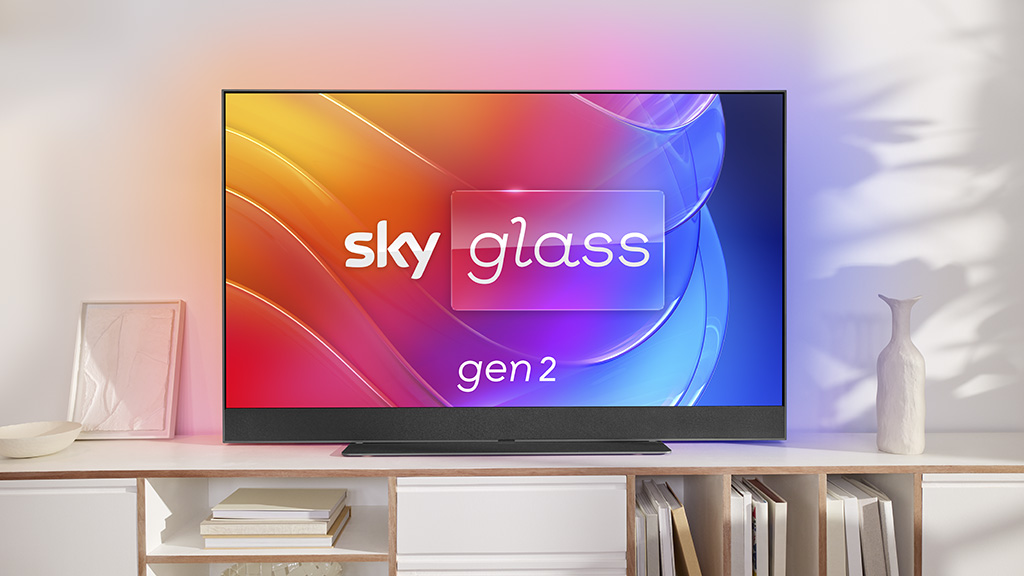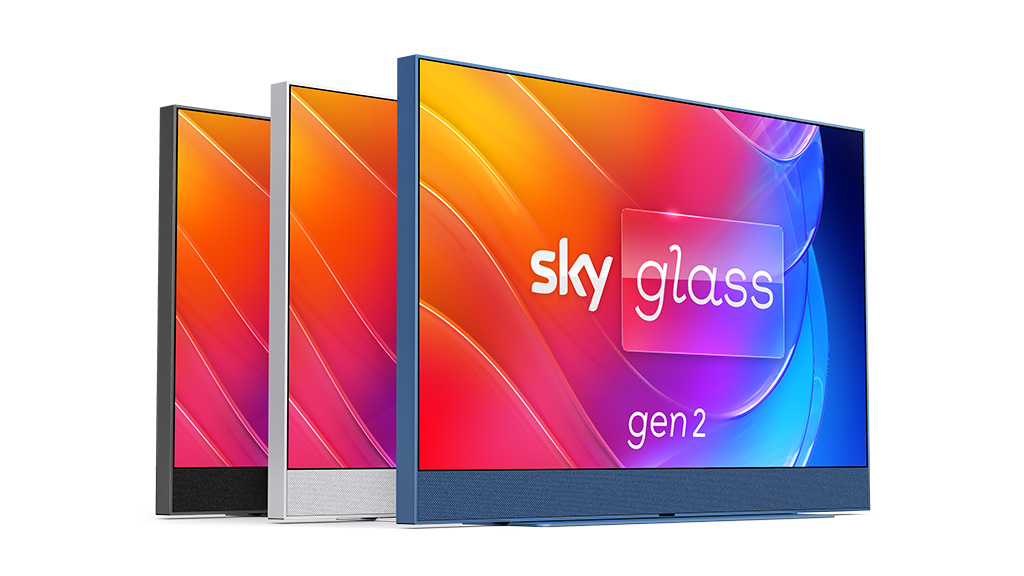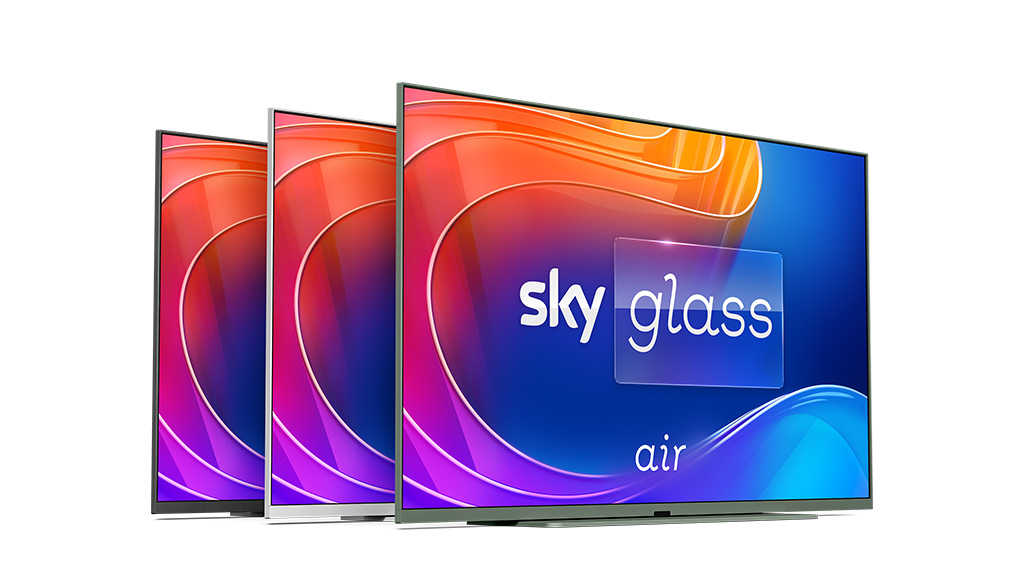Sky is doubling down on its Sky Glass integrated internet television, introducing a second-generation product with a brighter picture and bolder sound. It also has a cheaper, thinner version in development, to be called Sky Glass Air, coming later in the year.
The Sky Glass gen 2 has a brighter 4K HDR screen and an enhanced seven-speaker Dolby Atmos sound system built in.
The quantum dot display with local dimming supports Dolby Vision, HDR10, and HLG high dynamic range at 10-bit.
There are three outward facing speakers, two facing upward, and two subwoofers.
Although mainly designed for internet television, it does also support a digital terrestrial antenna input. So you can still watch terrestrial television if you cancel your subscription, as well as access to apps and the HDMI inputs.
It will be available on a monthly plan, with the smallest model starting at £14 a month over 4 years, which is £672 in total, or for £699 as an up front purchase.
That excludes the cost of a Sky subscription, which starts at £15 a month for a new Essential TV offering with a 24-month subscription, also available on a 31-day rolling contract for £18 a month.
If you want UHD, that will be another £6 a month. It is another £6 a month if you want to skip adverts. If you want to use more than one television it will add another £15 a month for a whole home package. Sky Sports will set you back at least another £31 a month, and so on.

It comes in three sizes: 43”, 55” and 65”. The are three colours: grey, silver, and blue, with matching speaker cover and remote control. Surprisingly, they have dropped the army green and navy blue. The chunky industrial design remains, mainly to house the speakers.

Fraser Stirling, the global chief product officer for Comcast and Sky, said: “The new Sky Glass Gen 2 gives people our best TV experience yet, with a brighter picture and even more cinematic sound, and with flexible ways to buy it, it’s more affordable than ever to get Sky TV.”
The screen uses an integrated Sky OS platform, the new name for its Entertainment OS in the United Kingdom. It includes personal playlists. It will save or record previous and future episodes, although there is no local storage. Sky describes it as like recording, only better.
The Sky Glass screen includes a far field microphone that wakes up when users say: “Hello Sky”. There is also motion detection to wake from standby.
Power consumption is stated as 71W for the 65″ screen in standard dynamic range, rising to 232W in high dynamic range.
Later this year, Sky will launch Sky Glass Air, a lower cost version with the same screen sizes. It will be a lot thinner, with just stereo speakers and Dolby Audio.

All the Sky Glass products, as well as the Sky Stream puck device, use services delivered over the internet.
Sky says that its traditional satellite service will be with us “for a while”. Its Sky Q product was released in 2016 and although there have been software upgrades, the hardware has not been updated.
“Sky Q is still a big focus for us and all the millions of people that use it and love it use it every single day,” the Sky executive told reporters.
Sky has a contract with satellite operator SES to deliver satellite services until 2029, which is over 30 years since the introduction of its digital satellite service and will be the 40 years since the launch of its multichannel service.
The current fleet of Astra satellites will be reaching end of life by the end of the decade. SES satellites at the 28°East orbital position deliver a wide range of channels to more than 17 million TV households in United Kingdom and Ireland.
